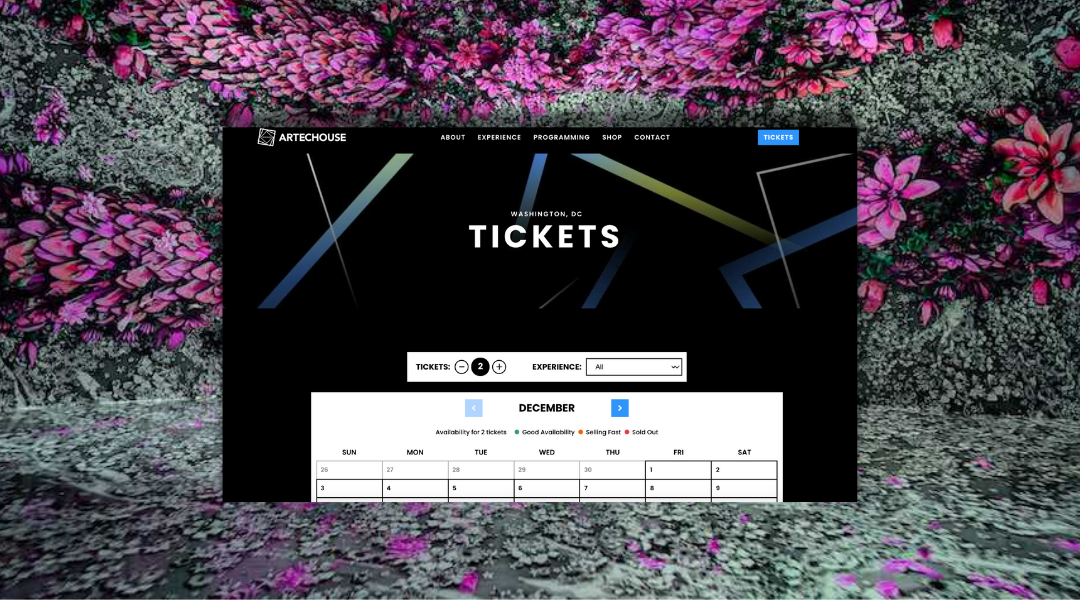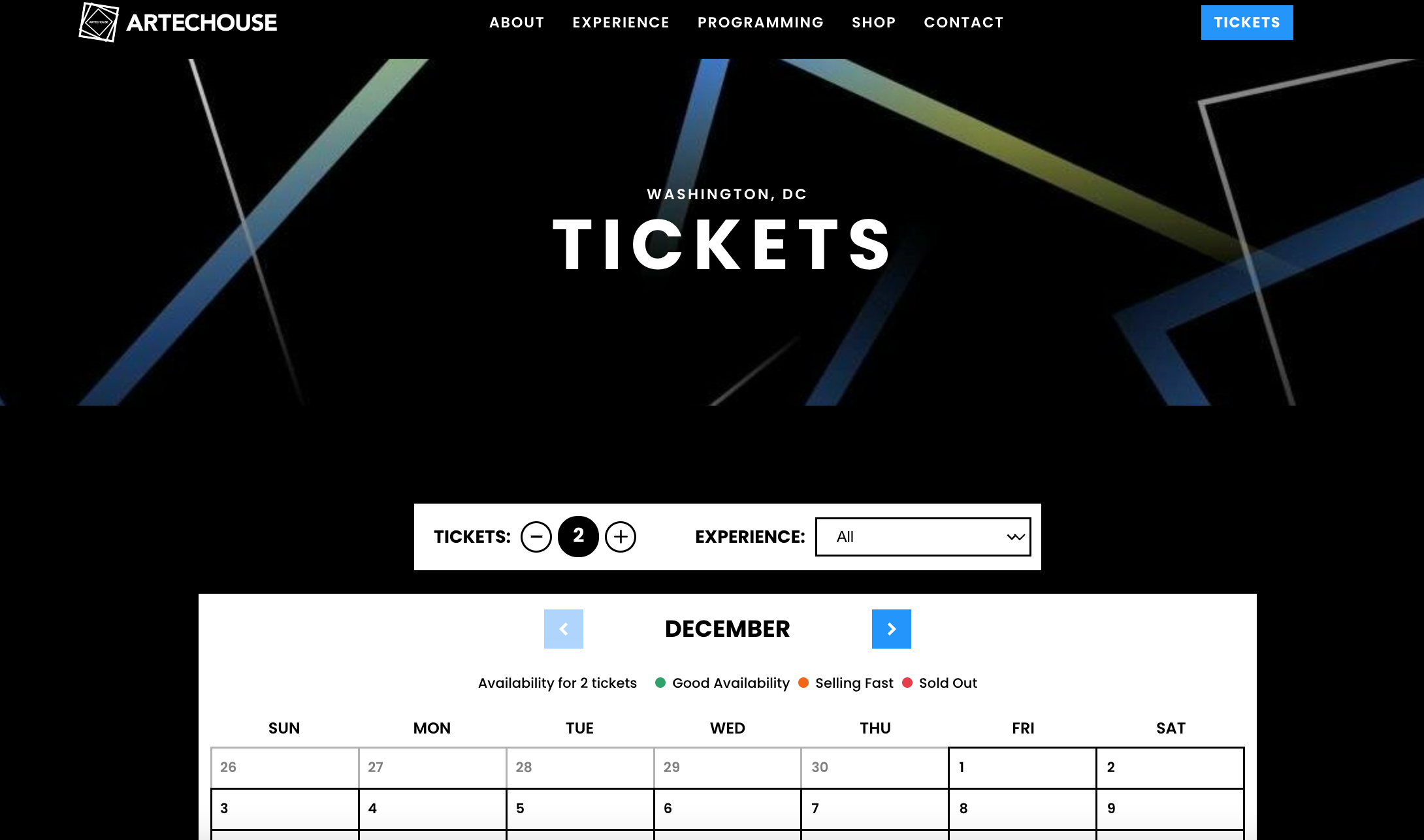
TICKX Integration
Challenges / Brief
ARTECHOUSE — a leading digital art destination with multiple locations across the U.S. faced a number of operational, marketing, and UX challenges as it scaled:
Fragmented guest experience: Each location used different ticketing tools or microsites, with inconsistent branding, making it difficult to deliver a seamless, unified booking flow.
Low conversion & friction at checkout: Drop-offs in the purchase funnel were high due to redirect-and-external ticketing flows, cart abandonment, and limited ability to upsell. Further through GA there was an inability to track funnel attribution for both conversion and drop off.
Limited marketing attribution & data isolation: Marketing channels weren’t reliably connected to ticket sales; it was difficult to assess which campaigns drove conversions or optimize based on real data.
Inability to cross-sell or bundle across experiences: Because each location operated semi-independently, guests couldn’t easily bundle multiple shows, add-ons, or post-purchase upgrades.
Scalability constraints: As ARTECHOUSE planned to open new sites, they needed a platform that could scale, unify infrastructure, and reduce manual workload.
TickX presented itself as a platform that could embed a branded booking flow, improve marketing insights, enable post-purchase upsells, and unify data across venues. The ask: integrate TickX as the backbone ticketing / marketing layer across all locations.
I was the lead on the TickX integration — Partnering with Peek Pro ticketing system and coordinating cross-functional teams (internal operations, engineering, marketing, venue managers, and TickX) — to ensure a smooth rollout across multiple museums.
Goals
Seamless, branded booking experience
Bring the ticketing experience fully onto ARTECHOUSE sites (versus external redirects), with full brand control, smooth flows, and mobile-first design.
Improve conversion & increase average order value (AOV)
Reduce cart abandonment, improve checkout conversion, and introduce upsells, bundles, and add-ons to drive incremental revenue.Unify data and improve marketing attribution
Capture clean customer-level data, tie marketing spend to actual ticket sales, and enable optimization across locations.Enable post-purchase revenue and engagement
Offer guests relevant add-ons, upgrades, or offers after they have purchased; facilitate shareable content or offers to drive further visits.Scalable & maintainable infrastructure
Have a single architecture that can be deployed to new locations with minimal friction and overhead, with modular configuration.Measure success with clear KPIs
Track uplift in conversion, AOV, bundling %, revenue per visitor, and operational efficiencies (reduced manual tasks, fewer vendor integrations).
Results
Unified brand experience: Guests received a consistent, polished booking experience regardless of location — reinforcing the Artechouse identity.
Collaborative alignment: As integration lead, I established clear processes, regular syncs among marketing, tech, and venue teams, and close partnership with TickX to iterate quickly.
A/B experimentation & iteration: We ran experiments on upsell placement, pricing rules, abandonment recovery flows, and messaging — continuously learning what drives conversions.
Future-proof flexibility: Because the architecture is modular, we can swap components, enable new features, or adapt to future ticketing innovations without a full rebuild.




